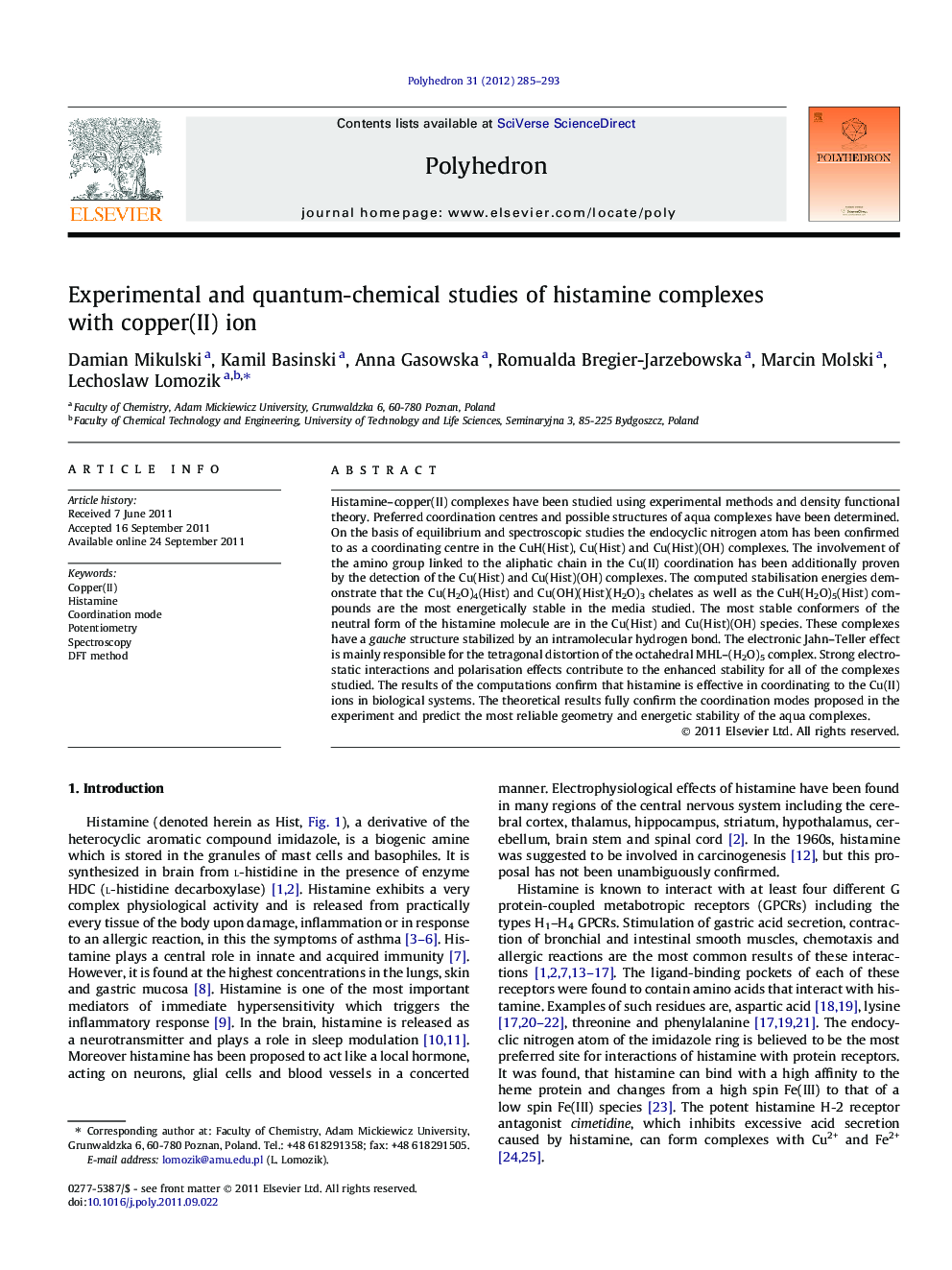| Article ID | Journal | Published Year | Pages | File Type |
|---|---|---|---|---|
| 1338190 | Polyhedron | 2012 | 9 Pages |
Histamine–copper(II) complexes have been studied using experimental methods and density functional theory. Preferred coordination centres and possible structures of aqua complexes have been determined. On the basis of equilibrium and spectroscopic studies the endocyclic nitrogen atom has been confirmed to as a coordinating centre in the CuH(Hist), Cu(Hist) and Cu(Hist)(OH) complexes. The involvement of the amino group linked to the aliphatic chain in the Cu(II) coordination has been additionally proven by the detection of the Cu(Hist) and Cu(Hist)(OH) complexes. The computed stabilisation energies demonstrate that the Cu(H2O)4(Hist) and Cu(OH)(Hist)(H2O)3 chelates as well as the CuH(H2O)5(Hist) compounds are the most energetically stable in the media studied. The most stable conformers of the neutral form of the histamine molecule are in the Cu(Hist) and Cu(Hist)(OH) species. These complexes have a gauche structure stabilized by an intramolecular hydrogen bond. The electronic Jahn–Teller effect is mainly responsible for the tetragonal distortion of the octahedral MHL–(H2O)5 complex. Strong electrostatic interactions and polarisation effects contribute to the enhanced stability for all of the complexes studied. The results of the computations confirm that histamine is effective in coordinating to the Cu(II) ions in biological systems. The theoretical results fully confirm the coordination modes proposed in the experiment and predict the most reliable geometry and energetic stability of the aqua complexes.
Graphical abstractIn the present study the copper(II)–histamine equilibrium complexes were investigated experimentally and theoretically. The coordination chemistry of these complexes was examined. The spectroscopic data and advanced quantum-chemical computations were applied to verify the coordination modes of the complexes studied and to asses their relative stability. These complexes were shown to form stable systems, in which imidazole and amino nitrogen atoms exhibit the substantial ability to coordinate to the copper ion(II).Figure optionsDownload full-size imageDownload as PowerPoint slide
